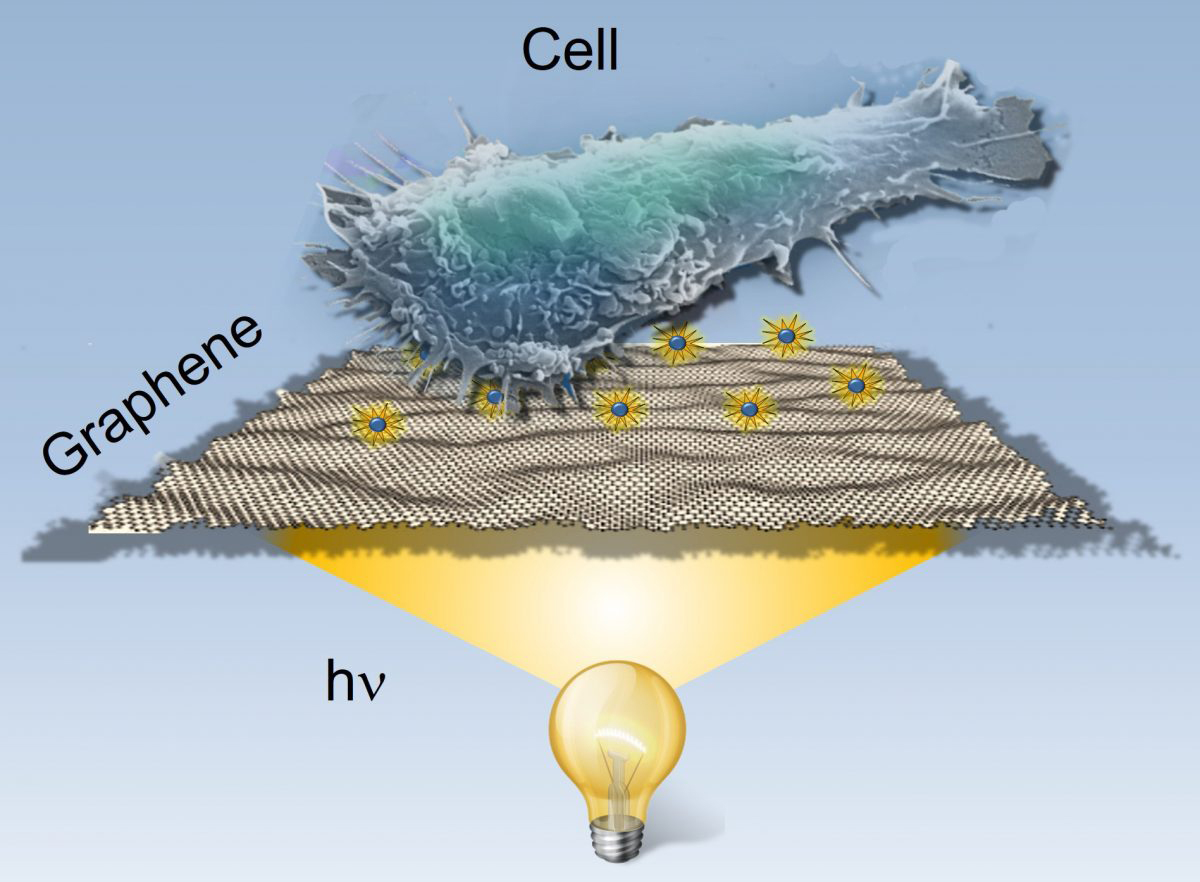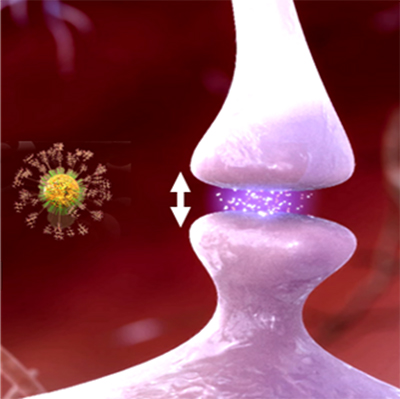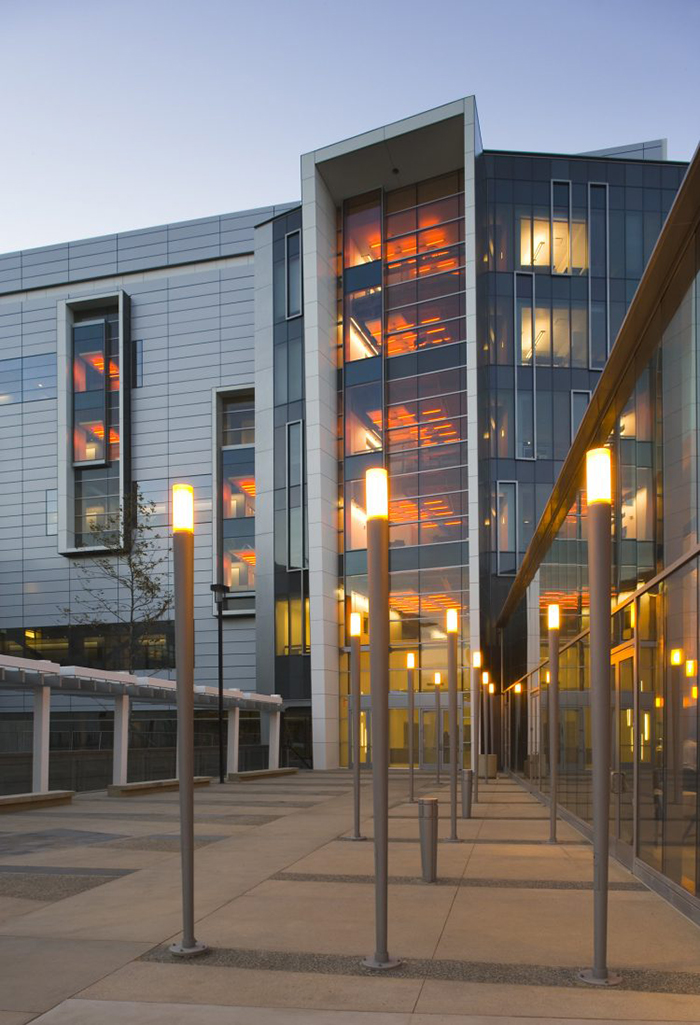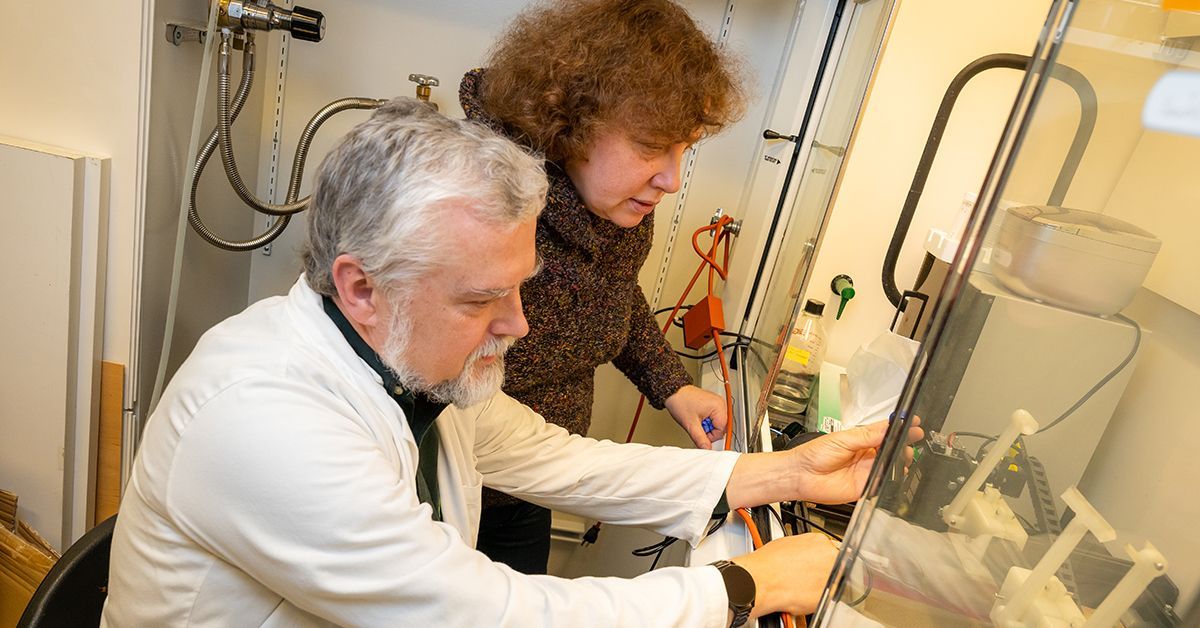The Explorers: A Passion for Science Leads to New Territory
Story by:
Published Date
Article Content
Biophysicists Alex Savtchenko and Elena Molokanova had a decision to make. They could keep working in their secure, well-compensated jobs in San Diego’s research and development hub or they could strike out on their own as entrepreneurs to develop medical technologies they believed could be revolutionary. Were their ideas feasible or were there pitfalls they weren’t seeing? Were the certain risks worth the uncertain rewards?
This wasn’t the first time they’d had a difficult decision to make.
From an early age, Savtchenko and Molokanova were self-described “nerdy and curiosity-driven” kids with a strong interest in mathematics and physics. These interests determined their choice of undergraduate studies: for Savtchenko, physics and chemistry at Moscow Institute of Physics and Technology (MIPT), an institute of higher education founded by Nobel laureate Peter Kapitsa; for Molokanova, physics at Ukrainian National University. In graduate school, they expanded their fields to include biophysics and neurobiology. While technical education in the former Soviet Union was famously strong, they saw the future there after formal education as grim, especially for aspiring scientists.
After receiving doctoral degrees in their home country of Ukraine at the renowned Bogomoletz Institute of Physiology in Kyiv, the couple left behind beloved friends and family to pursue research, first in Austria and then in the United States, where they believed stable access to funding, equipment and infrastructure would allow them to expand the boundaries of knowledge. Landing in Miami with their young son and three suitcases, their first years as researchers at the University of Miami proved to be both fruitful and challenging.

While they could read scientific papers in English with fluency, they still needed to improve their conversational English and adjust to the differences between European and American cultures. And while their initial positions yielded several high-profile publications, including in Nature and Proceedings of the National Academy of Sciences, they found their lack of US credentials and connections made it more difficult than expected to get ahead in academia.
But through all this, they remained committed to the idea that moved them to pursue science in the first place: they wanted to apply scientific knowledge to make the world a better place for everyone.
“We were explorers,” said Molokanova.
Unusual Breadth
This quest soon led them to seek out real-world problems that could have a bigger impact on people’s lives than basic science. They moved to the West Coast, where they pursued a mix of research and development jobs in biotech—including at Amgen and Invitrogen (acquired by Thermo Fisher)—and at universities including UC Berkeley (Molokanova), UC San Diego and Stanford University (Savtchenko).
These experiences working at intersection of physics and biology — coupled with decades of work across multiple scenarios in academics and industry — gave the couple a unique perspective on many of the biggest problems in neuroscience and drug discovery, as well as the business processes that helped or hindered progress.
So, as they discussed whether to start their own companies, they didn’t have to deliberate for long.
“It was pretty clear to me that the science was coming along nicely, and that our contribution [as entrepreneurs] would be serious, meaningful,” said Savtchenko.
Drug discovery challenges
One major challenge the pair had observed in the biotech industry involved initial testing of potential drug compounds—results that informed whether compounds would be pursued or discarded from consideration for further development as medicines.
Savtchenko noted that biotech and pharmaceutical companies spend billions of dollars on screening drug compounds for safety and activity in vitro (in cell culture), yet the environment in plastic cell culture dishes drastically differs from the human body, especially for nerve cells (a.k.a. neurons) and heart cells (a.k.a. cardiomyocytes).
“The biggest difference between neurons in the brain and neurons in a cell culture dish is whether they receive external input or not,” Savtchenko explained. “From the very first moment of our existence, it is normal and, in fact, necessary for our brains to be constantly bombarded by various signals (e.g., stimuli from sight, hearing, feeling, tasting)—the results determine our development, define our individual personalities and, often, affect our health.
He continued, “To discover drugs that can fix aberrations in brain activity and heal a patient, it is imperative to test the drug effects on functionally active, input-receiving, dynamic response-producing neurons. Otherwise, clinical studies in human patients might produce drastically different outcomes than prior in vitro studies—resulting in failed projects, loss of multibillion dollar investments, and disappointment for millions of patients.”
The development of medication that could affect the heart faces similar challenges. Testing for drug cardiotoxicity is often performed in highly artificial conditions—in an electrically insulated culture dish of human stem-cell derived cardiomyocytes, spontaneously contracting at a single frequency. In real-life, adult heart rates can vary almost two-fold over the course of a day in response to changing conditions.
Highlighting the importance of such testing, in recent decades several blockbuster drugs have been removed from the market because they were linked to irregular heartbeat, accounting for 30% of all post-approval withdrawals.
Harnessing a New Material
Savtchenko and Molokanova wanted to find a way to safely and reliably stimulate cells in a dish while testing their response in the presence of drug compounds so that the results of these screening studies would better predict the drug’s affect in humans. Reaching this goal would mean that fewer drugs would fail at the last stages of drug discovery process, resulting in safer, more efficient, and less expensive drugs.
After her industry experience working with different materials, including semiconductor quantum dots, to stimulate cells in culture, Molokanova hit on the idea to harness the unique properties of a new two-dimensional carbon allotrope, graphene.
Graphene had been discovered by Andre Geim and Konstantin Novoselov (coincidentally fellow alumni of Savtchenko’s alma mater, MIPT), who were awarded the 2010 Nobel Prize in Physics for this finding. In the Nobel announcement, the Royal Swedish Academy of Sciences described graphene as “a thin flake of ordinary carbon, just one atom thick … [with] exceptional properties that originate from the remarkable world of quantum physics.”

The properties of graphene that particularly intrigued Molokanova and Savtchenko included excellent conductivity, exceptional strength, biocompatibility, and, most importantly, the ability to turn light into electricity—which might be used to stimulate cells.
The pair founded Nanotools Bioscience in 2016, and Savtchenko currently serves as CEO of the company. Nanotools Bioscience is set to explore the possibilities of graphene-mediated optical stimulation technology for drug discovery and drug safety studies, as well as the creation of optical cardiac pacemakers and better stem-cell-derived neurons and cardiomyocytes.
Size Matters
While the couple focused on getting Nanotools Bioscience off the ground, Molokanova and Savtchenko also thought they might have a solution to an entirely different problem in drug development.
At Sanford Burnham Prebys Medical Discovery Institute, Molokanova was part of the Del E. Webb Neuroscience, Aging and Stem Cell Research Center, where colleagues were pondering how to make a better drug for Alzheimer’s and other neurological diseases.
Memantine (Namenda®, NamendaXR®, Namzaric®) is one of very few drugs available for Alzheimer’s patients. Memantine works by blocking NMDA receptors that are activated by glutamate, the most abundant excitatory neurotransmitter in the brain. “Memantine was approved only for moderate-to-severe Alzheimer’s, and its effectiveness was found to be limited,” said Molokanova. “There was a lot of room for improvement.”
The harsh reality is that, while NMDA receptors are a clinically validated drug target, drugs targeting NMDA receptors failed in many clinical trials. “The reason for that is the unmatched complexity of the human brain,” Molokanova says, “which may engage the same systems to perform tasks with opposite outcomes.”
In the nervous system, neurons communicate with each other by releasing neurotransmitters, including glutamate, into the small, tightly contained and strictly controlled junctions between cells called synapses. Under normal conditions, glutamate mediates key physiological processes, such as breathing, thinking, learning, talking, walking. To ensure that a person is always ready to receive a new signal from the external world, glutamate is quickly cleared from the synaptic cleft by specialized intracellular machinery, so the presence of glutamate in the synaptic cleft and its effects in the brain are fleeting.
However, Molokanova explained, if disease or trauma causes cell injury or death, the damaged cells can spill their contents, including glutamate, into the brain. There, glutamate can remain outside synapses for long periods of time and continuously overactivate neurons because there is no machinery to remove it. This uncontrolled stimulation of brain cells could relate to disease symptoms for not only Alzheimer’s, but also for neurological conditions such as Huntington’s disease, traumatic brain injury, autistic spectrum disorders, and substance use disorder.
The question was: how to selectively disable rogue glutamate activity outside the synapses, while leaving intact normal neurotransmitter activity within the synaptic clefts?

While many scientists were attempting to use a chemical approach to try to tackle this problem, Molokanova donned a nanoscientist perspective and found an unorthodox solution. She imagined developing a nanodrug candidate that was large enough to be deflected from the narrow synaptic cleft so normal physiological activity of glutamate could continue, but still small enough to diffuse through the brain to disable pathological activity of rogue glutamate by blocking NMDARs.
Molokanova founded NeurANO Bioscience in 2019 and leads it as CEO to pursue this avenue of research and explore which neurological disorders might benefit from these nanotherapeutics.
More Decisions
With the launch of their startups, Savtchenko and Molokanova had more critical decisions to make, starting with how to fund the companies. They could appeal to venture capitalists—who, in return for financial investment and expertise, would require attention, managerial input and a percentage ownership of the businesses—or they could try to cobble together grant funding through awards from federal, state and nonprofit agencies.
“It was a hard decision on how to move the company along,” Savtchenko said. “Venture capital is a great way to do it—most new companies do it that way. But it takes 200% of your time, and has low probability of success for early-stage start-up companies, especially in the drug discovery field. Essentially, our decision was to proceed with grants. Although it was difficult, I think it was the right decision, mainly because we still focus on science.”
Molokanova added that women-led firms have particular difficulty acquiring investments from venture capitalists: the statistics show that, of all the companies funded by venture capitalists, only about 1.9% are run by women. “This was another reason to opt for grant funding,” she said.
Molokanova took on the heavy lifting for the grant writing, and the team eventually successfully won awards from the National Centerfor Advancing Translational Sciences (NCATS), the National Institute on Drug Abuse (NIDA), the National Institute of Mental Health (NIMH), the National Institute of Neurological Disorders and Stroke (NINDS), the National Institute on Aging (NIA), and the California Institute for Regenerative Medicine (CIRM).

In the meantime, the pair needed a physical home for their endeavors. They heard about the Qualcomm Institute (QI) Innovation Space, a startup incubator on the UC San Diego campus. They applied and were accepted into the program.
Finding a Home
In the QI Innovation Space, they found a welcoming and supportive environment. “We got space and facility use—for our work needing cell culture and a chemical hood,” Savtchenko said, “and Professor Ramesh Rao understood what we were trying to do and helped us trouble-shoot.”
But even more importantly, the QI Innovation Space positioned them to build on the intellectual capital at UC San Diego, including the Sanford Consortium for Regenerative Medicine, of which the university is a part.
“In addition to excellent facilities for scientific development, there’s the kind of environment where you can exchange ideas and talk to people,” Savtchenko said. “There are possibilities to collaborate in multidisciplinary ways. While not totally unique, UCSD is probably one of 10 places in the country like that.”
At UC San Diego, the team nurtured and forged connections with faculty members across disciplines.

Campus collaborators came to include Oscar Vazquez Mena, a Jacobs School of Engineering Nanotechnology faculty member whose research focused on graphene and nanoscale materials; Byungkook Lim, an associate professor in Biological Sciences working in the field of drug addiction and depression; and Alysson Muotri, a professor in the School of Medicine Departments of Pediatrics and Cellular & Molecular Medicine studying the brain from an evolutionary and developmental perspective.
The benefits ran both ways. “I really enjoy working with [Alex and Elena],” Muotri said. “Both have strong backgrounds in molecular biology, electrophysiology, and microscopy. They are very professional and creative, always proposing novel solutions during eventual troubleshooting roadblocks on our projects. Both have a strong entrepreneurial inclination, which I found extremely useful during our collaborations.”
Another key scientific alliance for NeurANO was Albert La Spada, formerly of UC San Diego and now distinguished professor and director of UC Irvine Institute for Neurotherapeutics. La Spada, who is renowned for his pioneering work on diseases caused by genetic mutations involving trinucleotide repeats, joined Molokanova on two successful grant applications. Lim joined the pair on another.
Intellectual Rewards
Within the Qualcomm Institute and the hub of UC San Diego, the team’s momentum has continued to grow.
One milestone was a 2018 paper in Science Advances that showed graphene could be used in conjunction with light to dial up or down the pace that heart cells beat in a dish. The technique also worked in a living organism (zebrafish embryos).
Describing this accomplishment, an article in UC San Diego Today quoted Savtchenko as saying: “When we first got this working in our lab, suddenly we had something like 20 people gathering around, shouting things like ‘Impossible!’ and accusing me of pranking them. We’d never seen anything like this before.”
The technique allowed tight and almost instantaneous control of the cells’ activity, and its potential use extended well beyond heart cells.
“Graphene’s electrical generation is totally governed by the amount of light, and goes on and off on femtosecond timescale,” Savtchenko said. “So now you have a way to shine light and modulate activity of neurons in cell culture or in parts of the brain that might be malfunctioning.”
More publications are in the works.
Joining Savtchenko, Molokanova and faculty colleagues on these groundbreaking discoveries have been the UC San Diego students employed as Nanotools and NeurANO interns.
Savtchenko has approached his role as mentor with thoughtfulness and enthusiasm. “I hope that we are seriously contributing to UCSD education,” he said. “Once our interns get their first results, it’s real excitement. They see what science is about.”
He proudly notes the team’s students have gone on to pursue doctoral work at institutions including UC San Diego and Stanford, Harvard and Cornell Universities. Both companies are always welcoming students interested in working on cutting-edge interdisciplinary scientific projects.
Savoring the Process
Successful collaborations, breakthrough discoveries, student researchers—this all sounds like the life in science Savtchenko and Molokanova had wanted when they first decided to come to the United States.
Molokanova admits that, while financial success is important, her primary goals as an entrepreneur are intellectual and social impact. Of their location on the UC San Diego campus, she says, “I love being here. I feel like I’m in academia.”
For Savtchenko, the best part of his entrepreneurship has been the scientific freedom: “For science and scientists, it’s a luxury to be able to address a simple, big question, a serious one, like how to prevent your own decline in diseases like Alzheimer’s. Scientifically, it’s very fulfilling.”
Stay in the Know
Keep up with all the latest from UC San Diego. Subscribe to the newsletter today.




